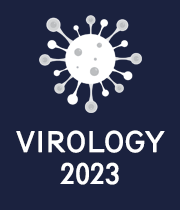Title : THE HSV-1-TEGUMENT PROTEIN US11 IS ENROLLED IN THE CASPASE-8 CLEAVAGE
Abstract:
The ability of Herpes simplex virus-1 (HSV-1) to replicate and spread is due to several virulence factors which hamper the antiviral response. HSV-1 is known to modulate several intracellular signaling pathways including the FADD/caspase-8 death-signalling. Caspase-8 is an initiator caspase which normally triggers the apoptotic event following its activation mediated by proteolytic processing. Besides its role in apoptosis, pro-survival functions of caspase-8 were described. HSV-1 it is known to efficiently modulate apoptosis to promote its replication through the expression of several virulence factors. One of them is the tegument protein Us11, which is known to counteract the heat and staurosporine-induced apoptosis as well as the autophagy response. Based on this, the aim of this study was to: i) investigate the role of US11 on canonical caspase-8 functions related to apoptosis response; ii) verify the physical interaction of Us11 and caspase-8 in the contest of viral infection as well as in a cell-free in vitro system (iii) investigate the role of caspase-8 on HSV replication. The human monocytic leukemia cells (THP-1), embryonic kidney cells (293T), and wild type and caspase-8 deficient (CASP8-/-) epithelial cells derived from a larynx carcinoma (HEp-2) were employed as models with different permissivity to viral infection in order to study the role of caspase-8 during HSV-1 replication. A combinatory approach of HSV-1 mutant (R3630-ΔUs11/ΔUs12) infection and Us11- and Us12-encoding plasmid transfection was employed to investigate the ability of Us11 to interact with caspase-8. Moreover, GST-Us11 and GST-caspase-8 recombinant proteins were produced by using the Baculovirus Expression Vector System (BEVS) technology proteins and used to verify the interaction of these proteins in a cell-free system. Our results can be summarized as follows: i) HSV-1 accumulates caspase-8-p18 active fragment in US11-dependent manner in both monocytes and epithelial cells; ii) Us11-recombinant protein induces caspase-8-p18 cleavage by physically interacting with the caspase-8 recombinant protein as reported by immunoprecipitation assay in infected cells and by Caspase-8 cleavage assay in cell-free system; iii) the canonical cleavage of procaspase-8, induced during HSV-1 and R3630 infection, results in apoptosis induction as confirmed by p43/41-dependent PARP and caspase-3 cleavage otherwise, Us11-dependent p18 accumulation does not trigger apoptosis. Therefore, to understand the biological role of Us11-dependent p18 accumulation we analyzed Atg3 protein as a representative substrate of activated caspase-8 protein during HSV-1 replication. We found that HSV-1 specifically cleaves Atg3 protein as shown by the reduction in the full-length protein compared to the basal levels and by detecting cleavage fragment. Otherwise, the addition of the caspase-8 inhibitor z-IETD-fmk as well as the transfection with a pool of chemically synthesized caspase-8 siRNAs resulted in the block of Atg3 cleavage suggesting a direct connection between the activation of caspase-8 mediated by HSV-1 and Atg3 degradation. This ubiquitously expressed mechanism in THP-1 and HEp-2 cells, allow us to investigate the role of caspase-8 during viral replication by comparing the cytopathic effect, viral title, viral DNA accumulation and the HSV-1 proteins cascade expression in wild type HEp-2 (CASP8+/+) and CASP8-/-. Our finding report that the accumulation of viral proteins and DNA, as well as virus yield, were affected in CASP8-/- suggesting that caspase-8 might have a pro-viral role during HSV-1 replication. Therefore, we speculate that the “non-canonical” activation of caspase-8 by HSV-1 can be a new viral immune escape mechanism to, through the fragmentation of ATG3, block autophagy and support better replication.
What will audience learn from your presentation?
- The pandemic period that we are living has demonstrated that the best way to respond to viral infection is the knowledge of host-virus interaction to predict human susceptibility to viral infections. Thus, knowledge of immune evasion will help us better understand the pathogenesis of viral infection, and provide insights into developing antiviral strategies and improvement of vaccines.
- Our findings report a new evasion strategy employed by HSV-1 which support viral replication. Thus, these findings can be useful to formulate new therapeutics and vaccines which interfere with a specific pathway and prevent and treat herpetic infections.
- The virus can subvert the host intracellular pathways to support better replication. This work highlights how a cellular pathway, previously related to death event, can be subverted by virus to promote better replication.


